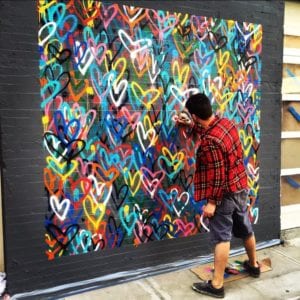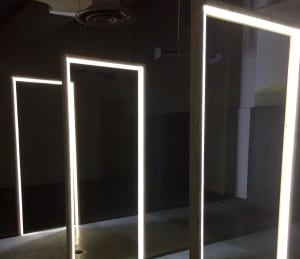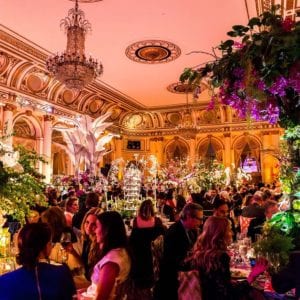top image // Ellen Jong in her studio with Etiquetta, She’s a Bitch, an ink canon she made to fire on her self-portraits
Wouldn’t it be amazing to experience art with the artist right there explaining why and how they made it? You can!
Studio visits are one of the art world’s best-kept secrets. If you get as obsessed as I am, you’ll be setting up your own private studio visits, but galleries are happy to do it for you. Art schools, residency programs, and local artists regularly hold open-studio events. Open studios are the friendliest for newcomers. Google them in your area or if you’re near NYC, grab a friend and go for a studio hop this weekend in Victorian Flatbush at the 2018 Studio Tour/Artwalk.
There’s no better way to learn about art than directly from an artist. In their studios, you’re not limited to their recent or finished pieces, like you are at an exhibition. When you’re surrounded by their works in progress, you see when inspiration struck them and learn how they turned it into a way for the rest of us to experience it, too.
Done right, studio visits are also inspiring for the artist. Here’s how to have the perfect one.

My first studio visit was incredibly intimidating. These lovely people took hours out of their day to show us their inner sanctum. I felt enormous pressure to buy—not from the artist or the gallerist. It was just the situation. I felt like I had to walk out with a work, whether I wanted one or not.
Now, most of my acquisitions are from artists’ studios, but my focus has shifted from acquiring objects to supporting artists I think are important. So it takes multiple visits for me to know an artist well enough to decide whether (and which piece) to buy, but I usually leave walking on air.
To give you the inside scoop, I sat down with photographer, sculptor, painter, and writer, Ellen Jong, to chat about the perfect studio visit—from both the collector’s and the artist’s perspective.
When I brought up my angst about studio visits resulting in sales, I was relieved at Ellen’s shocked response, “That’d be like expecting someone to go all the way on the first date.”
During a magical afternoon in the Catskills, we discovered that the first date analogy works really well on both sides. That includes the small stuff, but before we get to private studio visits, let’s start with open studios.
Open studios are like going to a friend’s party. Your only obligation as an art lover/collector is to make nice. Don’t criticize the work. Even if you’ve left the studio, keep your comments positive—you never know who might overhear you.
And artists, what we want from you at open studios is a taste of your practice. Give us a conversational version of your artist statement. The absolute worst thing you can do is to have nothing to say. We come to your studio because we want to meet you, not just experience your work. Read your audience. If you’ve got a hardcore collector on your hands, give us meat. If you don’t, draw your viewer in gently. Don’t scare them with art-crit lingo.
I met Ellen years ago at a crowded party. I was immediately entranced with the honesty of her work. She’d just created an ode to the female gaze called Getting to Know My Husband’s Cock. The book is a collection of fine art photography of her husband. (Yep. The real one, not a fiction.) She describes the work as “a love song” and “a journey in self-discovery that informs a newfound woman.” Without the verbal context, you might think Ellen’s work is shock art, but talk to her for five minutes, and you’re struck with her bravery as she teaches us all more about ourselves by laying bare her own experience of life as a woman and a girl.
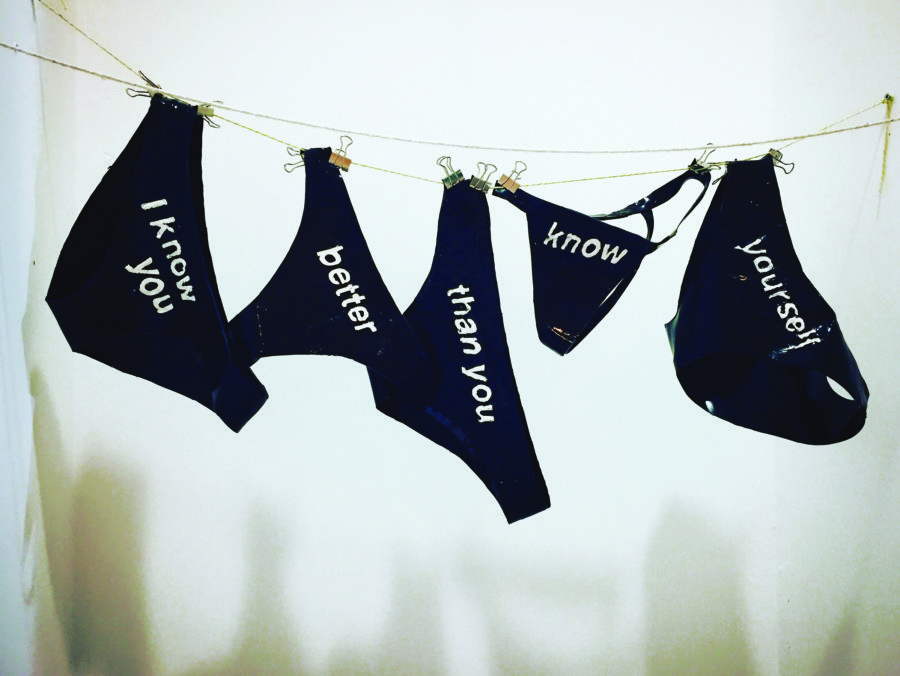
Ellen’s work revolves around memory and becoming. Her father is a painter who collects Chinese ink sticks. These solid blocks of ink become liquid when you grind them on a stone with water. Ellen trained in traditional Chinese painting from the age of 3. Since ink was so formative for her, her newest work rejects its traditional form. She’s largely given up painting with it. Now she sculpts it into casts of her own body, weaves unwearable intimate apparel out of it, and shoots it out of canons at self-portraits. Her work is playful, poignant, naughty, and, most of all, real.
Here’s what made our studio visit a lovefest for Ellen. First, I always try to bring something to show my appreciation. Usually, it’s flowers or wine. Since it was early, I brought donuts. Second, when I asked questions, I shut up and let her answer at length. Talking through her new work helped her solidify the feelings she wants to communicate with it. I also gave her respectful feedback and only made a suggestion when she asked me. My comments were substantive and kept the focus on her work.
Here’s what made our recent studio visit a lovefest for me. She put out a cheese plate and kept the tea kettle humming. She answered my questions thoughtfully and in depth. She let me experience the new textures she’s achieved with ink—all based on ancient techniques. Some pieces were as supple as fabric while others were as rigid as hard plastic. (I’m really tactile, so I love touching the art.) As important as her process is, Ellen only talked about how she makes her work in service of why she’s making it. That’s incredibly important for me. When an artist only focuses on their how, I don’t get the emotional punch in the gut. I’m looking for their why. Needless to say, with Ellen, I was feeling it in my gut all day!
Studio visits are divine! So get out there and experience them yourself. If you want to see how wonderful they can be first, join us in Ellen’s studio on YouTube. You can also follow her on social media @peenessenvy.
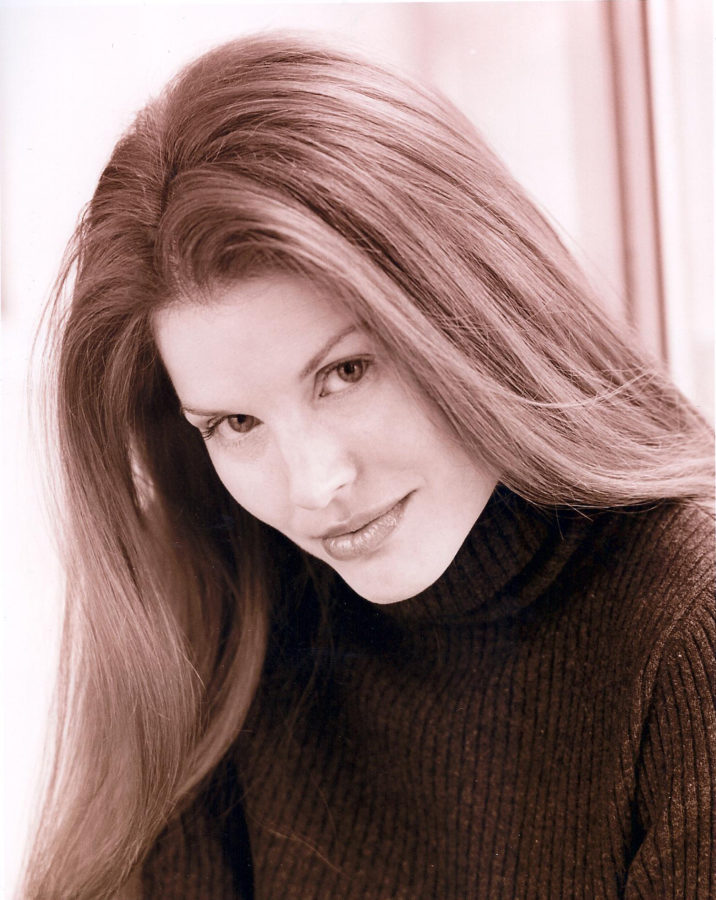
Holly Hager is an art collector and the founder of Curatious. Previously an author and a professor, she now dedicates herself full-time to help artists make a living from their art by making the joys of art more accessible to everyone.

